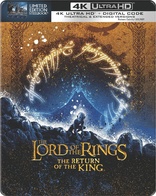Quote:
Originally Posted by djcruiser

Thanks for the answers so far...
I would also be curious as to why we couldn't use RG-6 cable the whole way?
Either/Or?
Why both? Cable to the box, HDMI from the box?
I do know that the higher codecs for audio are only acheived via HDMi, but is picture quality for HD really that dependent on HDMI or could RG-6 Cable or A/V component cables be just as good of quality?
Maybe it is me not trusting business's some much as to thinking that they are manufacturing the quality factors to get consumers to spend more money when the don't really need to.
|
First, for the HDMI vs. RG-6. When the signal comes from a satellite, or from a cable jack in your house, the information is packed and encoded in a way that your television could not decode, at least for HD channels. (As a sidenote, for over-the-air HD, RG-6 will carry HD video from the antenna to the TV, but this is because the decoding is done in the TV itself if it has an OTA-HD tuner. If it does not, the digital converter will need HD outputs for HD channels.) Once the signal is converted from its data packets to HD programming, outputting through RG-6 from the cable box will get you 480i programming. Is this because manufacturer's won't allow HD over RG-6? Maybe, but given that an RG-6 cable is a single tranmission line with a ground, it would seem as though it is in fact limited.
The question of "why not use HDMI the whole way" is parallel to asking "why doesn't my internet come into my house on a Cat-6 cable, straight from the internet company?" Essentially, as mentionned earlier, transmission through your cable or satellite RG-6 lines is data packets that travel fine through RG-6. HDMI, High-Definition Multimedia Interface, is just that, and
interface meant to facilitate the transmission of HD multimedia from a source to a display, not across a network. Do you also wonder how it is that the phones lines that circulate in a neighbourhood also look in no way line the phone lines in your walls or from your wall jacks to your phone?
And finally, the lovely question of whether or not HDMI is the new divine intervention. I'm not at all looking to argue over this, so I will try to state basic facts. Let's compare first to composite video, your lovely yellow cable with RCA ends. Strictly speaking, there is absolutely no way to get a resolution higher than 480i (576i for PAL, I believe) simply because it is a single cable, again with a single conductor and a ground. If you recall, when progressive scan DVD players came out, composite video cables could not even carry 480p because of their limited bandwidth. Enter component cables, green, blue, and red cables with RCA connectors. Essentially, three cables each capable of doing the job of one composite cable. So, you triple your bandwidth. With unprotected content, component cables can carry resolutions up to 1080p; HDCP-flagged content will not transmit beyond 1080i through component, to protect it from being recorded.
Now, as I've mentionned, yes component cables are able to handle 1080i signals, which covers every broadcast and satellite channel. So, then, do you need HDMI? No, not at all. What's the difference? Essentially, in transmission; with HDMI cabling, you have a digital signal in your cable/satellite box, transmitted digitally through the cable, and displayed digitally on the television. With component cables, the digital signal in your satellite/cable box is transformed into three analog signals, transmitted over an analog medium to the television, which, being a digital display, re-digitizes it for display. Is this a huge, mind-blowing difference? No. Most televisions are able to handle the process flawlessly.
As I mentionned in the outset, however, I am not here to debate if there is a quality difference, however, because I don't personally have a strong opinion on the matter. I believe that HDMI in most applications is a matter of simplicity, with one cable instead of [at least] three.


























 Linear Mode
Linear Mode

